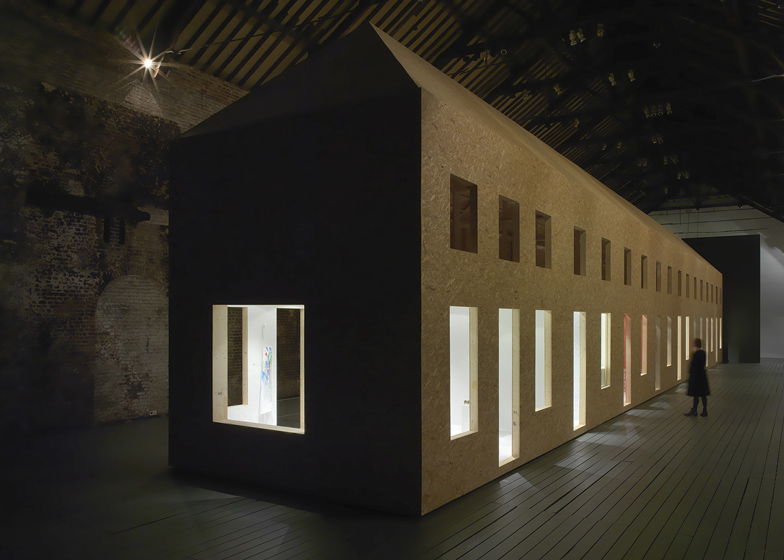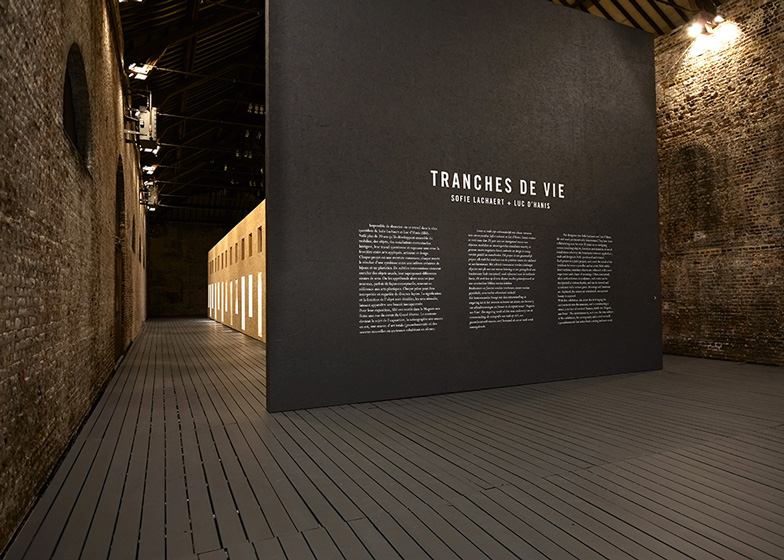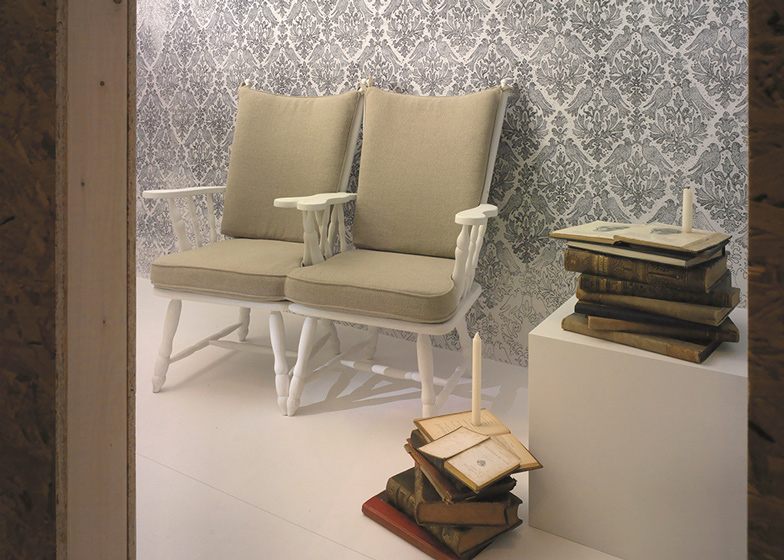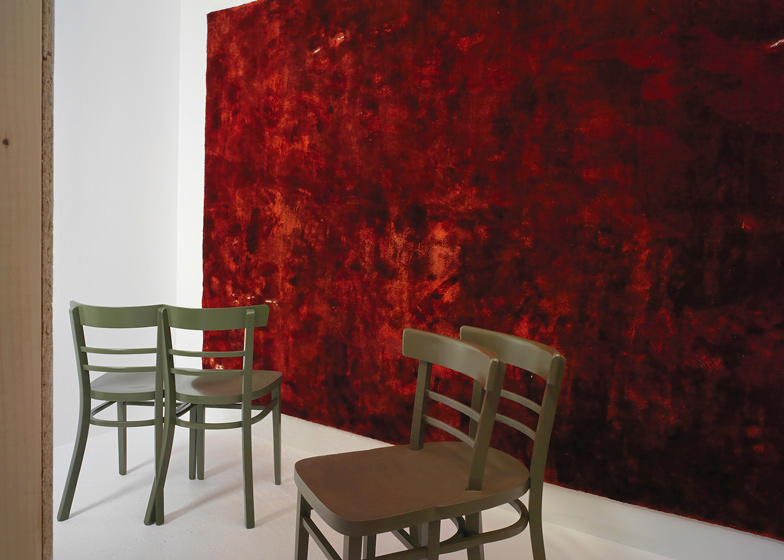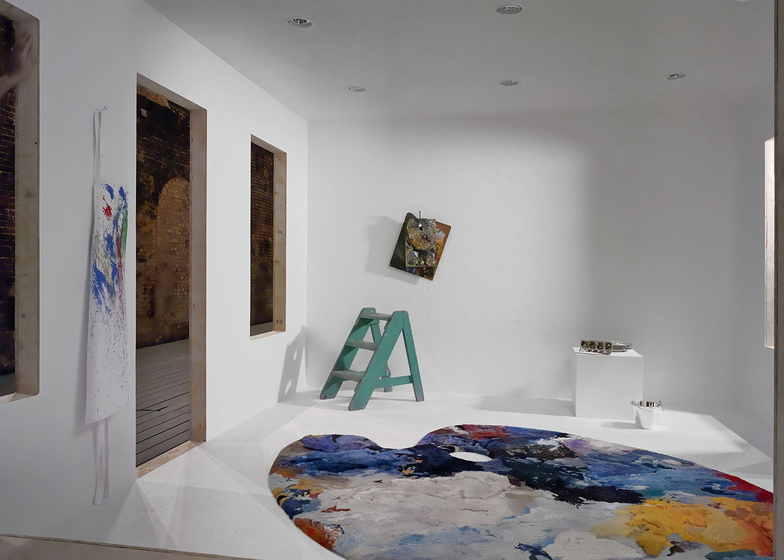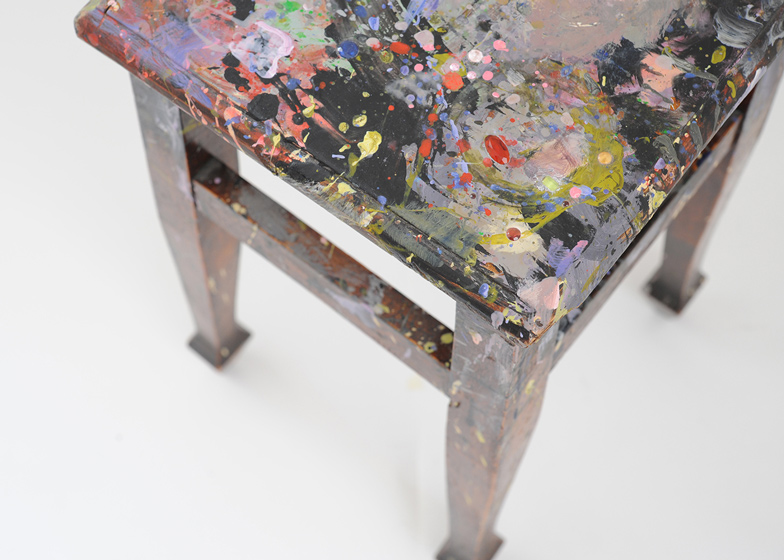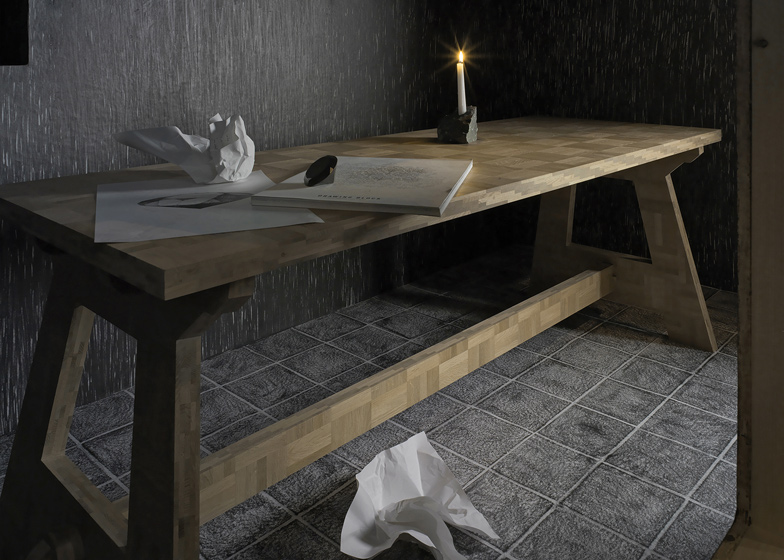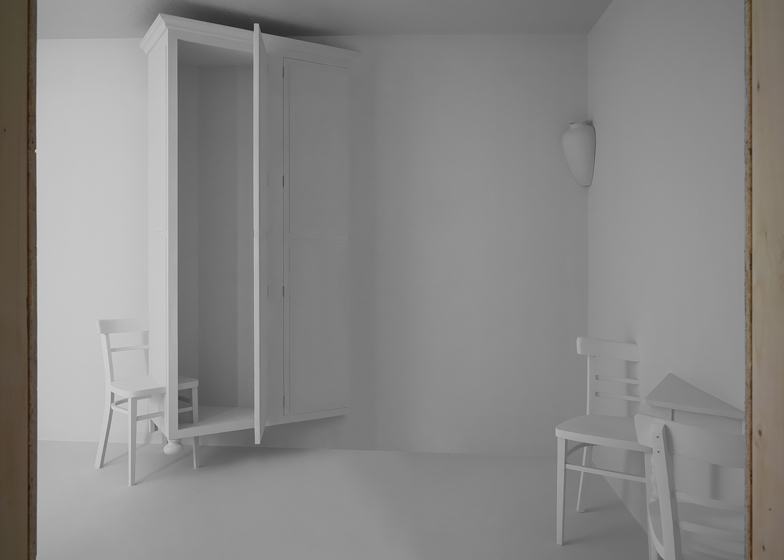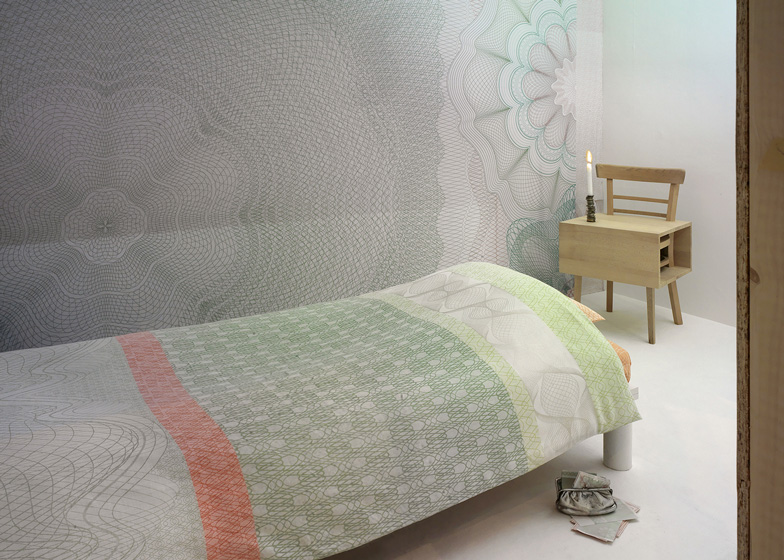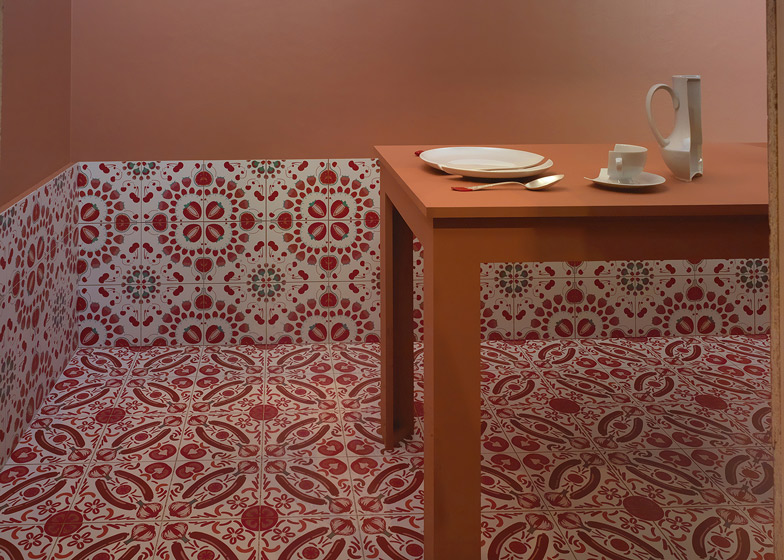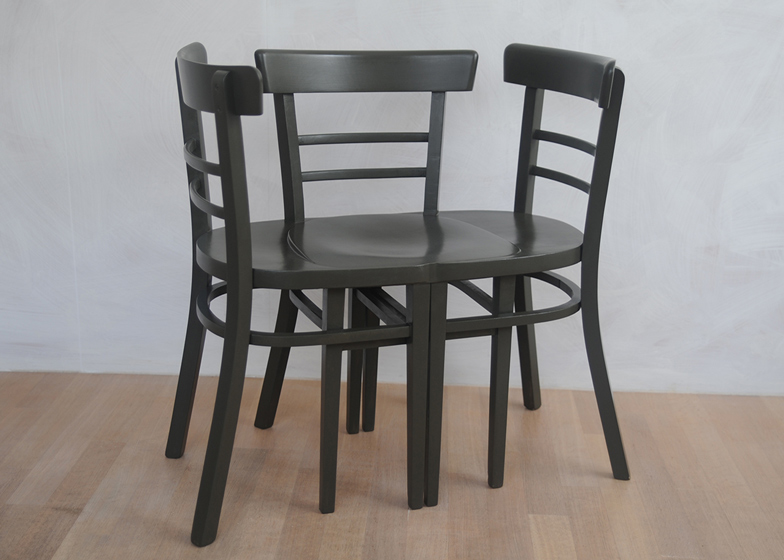Artist duo Sofie Lachaert and Luc d'Hanis have recreated a terrace of workers' cottages to house an exhibition of their work at Belgium's Grand-Hornu Images museum (+ slideshow).
Tranches de Vie – which translates as slices of life – features a structure built from oriented strand board (OSB) created by Lachaert and d'Hanis inside the museum in Hornu, south-west of Brussels. The structure references workers' housing in the town's 19th-century mining complex, which is a Unesco World Heritage Site.
"With Tranches de Vie we bring the environment, the site of Hornu, into the museum – a complete street with houses, a scenography, as a work in itself," said the artists, who work under the joint name of SLLD. Together, they have been collaborating for more than 20 years on works that encompass objects, furniture and installations.
Each cottage has a separate identity inside, and features objects and furniture with hidden messages, which challenge distinctions between art, design and craft.
"Lachaert and d'Hanis are not looking to make a product, nor are they seeking to make a work of art. They will bring back into design things that are usually connected solely to the visual arts," said a release from the artists.
The duo collaborated with a range of manufacturers to create the works, including Italian company Léa Ceramiche for Bacteria, which features laminated porcelain tiles decorated with elaborate drawings of bacteria.
Léa Ceramiche also produced tiles for Aphrodisiac, which features a repeat pattern of sausages and bisected fruit. "A series of tiles relates the mundane and violent act of cutting and eating food, and to the equally banal and alarming acts of love and physical intimacy hidden beneath the public face," said the artists.
Floor tiles in another installation also feature a sausage motif, this time made in collaboration with Dutch manufacturer De Tegel BV. A conglomeration of interlocked tables stands on top of these. "It implies a sense of coming together, both spatially and socially," said the artists.
Another installation features a table made of 6,850 pieces of oak, made in collaboration with Belgian furniture maker Casimir.
Belgian fabric company Verilin made the bed linen for Money's Worth, which takes the visual language of paper money outside of its context of monetary value.
For Crossed Legs, the artists intertwined two bronze chairs. "The construction evokes the function of furniture as a stage for social interaction, allowing people to come together in familiar gathering," they said. "Through their structural language, the chairs echo the feeling of familiarity with subtly intertwined legs."
Photography is by Jean Godecharle, unless otherwise stated.
Here is some more information from Sofie Lachaert and Luc d'Hanis:
For artist duo, Sofie Lachaert and Luc d'Hanis, life and work are inextricably intertwined. They have been collaborating now for over 20 years on an intriguing oeuvre involving objects, furniture and situation-oriented installations whereby the boundaries between applied art, craft and design are both questioned and crossed. Each project is a joint project, each work the result of the symbiosis between these two designers.
With subtle interventions, mundane objects are enhanced with a new experience and a layer of meanings. Often conceptual, often with reference to fine art, each work can be interpreted at various depths, and can be viewed and scrutinised with various gazes. Meanings and functions are displaced, the senses are stimulated, unexpected beauty is exposed. With their work, slld bring captivating moments of wonder, reflection and poetic experience into everyday life. This is also true in Tranches de Vie.
With this exhibition, the artist duo is bringing the environment into the museum, a street, a terrace of workers' houses referring to the Hornu Mine complex, inside the Magasin aux Foins exhibition hall. The environment is, as it were, the true subject of the exhibition, the scenography and a work in itself. The visitor wanders around the street at dusk, the time of the day when silence falls. Here and there light shines in the terrace.
Curiosity and imagination are roused. The visitor looks through the window, notices unexpected images. Each viewing room displays an object or a series of objects with the required intimacy and its own, particular environment. These are subtle presentations whereby each work is placed in a specific context, and whereby the visitor is automatically compelled to view things more attentively. The other, more profound layers of meaning of the work are then revealed.

